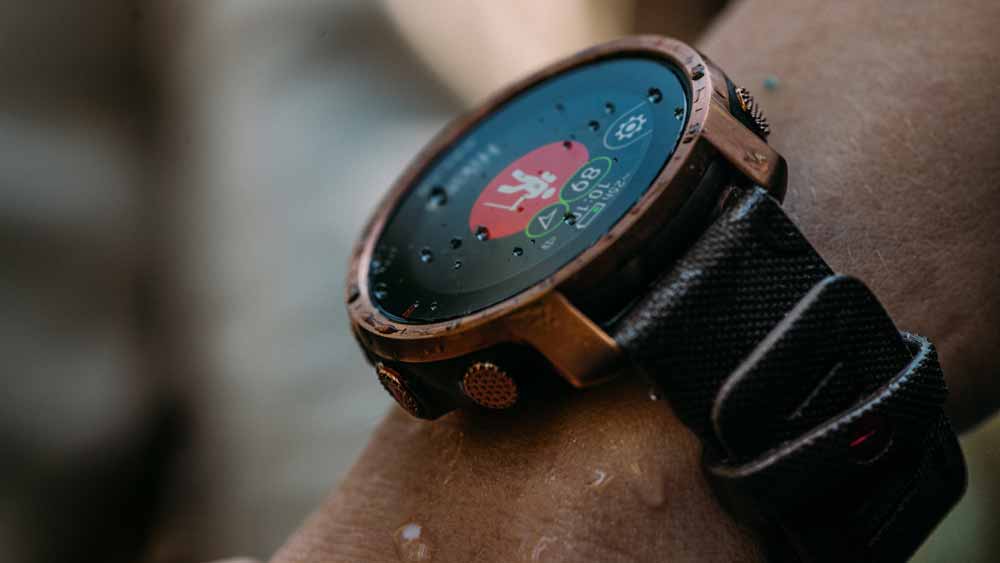Our Verdict
The Grit X Pro is an excellent multisport watch that brings some useful new navigation features to the Polar range, picking up the key features found in the top-of-the-line Vantage V2 in the process. With a more attractive and durable design than the Vantage V2, the Grit X Pro is the best Polar watch going, offering impressive sports tracking, detailed training guidance and insightful sleep monitoring. However, it still falls short of the features you get on Coros and Garmin’s top watches (albeit at a higher price than the Grit X Pro).
For
- Helpful routing features
- Hardy, attractive design
- Impressive sleep tracking
- Training load analysis
Against
- Weak battery life
- Thick black bezel
- Not the brightest display
- No maps or music storage
You can trust Coach
The original Grit X was a great multisport watch that offered most of Polar’s sports tracking features in a more outdoorsy design than the Vantage range. However, Polar did leave a few features off the Grit X, forcing you to choose between the design of the Grit X and the extra functionality available on the Vantage V2. This included running and cycling fitness tests and Recovery Pro, a way to help you gauge how tired your body is each day.
That’s no longer a choice you need to make, because the Grit X Pro gets all the features of the V2 and even brings a few that are new to Polar’s range, putting it firmly among the best fitness trackers. The Pro also has an upgraded design, with a more durable Sapphire glass screen and compass etching on the bezel. If you opt for the Grit X Pro Titan you’ll also get a lighter titanium case.
The result is the best Polar watch to date, one laden with useful features to help you train smarter and recover faster. The Grit X Pro is also smarter than past Polar efforts, with music controls, weather forecasts and outdoorsy widgets that show your altitude along with the hours of daylight where you are.
It’s a great all-round watch but still falls short of the extensive features available on Garmin and Coros’s top devices, which offer full maps and music storage. With Garmin’s Fenix range in particular you’ll get far more impressive navigation features, and both Garmin and Coros offer more in the way of battery life, with only seven days at best from the Grit X Pro.
Should You Buy Something Else?
While I rate the Grit X Pro as the best option in Polar’s range, partly because at £439 it’s £10 cheaper than the Vantage V2, there is a case for the other watches available. The original Grit X is considerably cheaper at £379 and Polar is still supporting it with new updates, so it will be getting most of the new features on the Grit X Pro and Vantage V2. You still won’t get the running, cycling and recovery tests on the pricier watches, or Recovery Pro, and some of the navigation features like the elevation profile of your route are also restricted to the Pro and V2, but the Grit X is still laden with great features, especially considering the £70 saving.
You might also prefer the sleeker design of the Vantage V2, which is made from a lighter aluminium and weighs 52g compared with 79g for the stainless steel Grit X Pro. Despite the Grit X Pro’s more attractive design and increased durability, I also found the Grit X more comfortable to wear all the time.
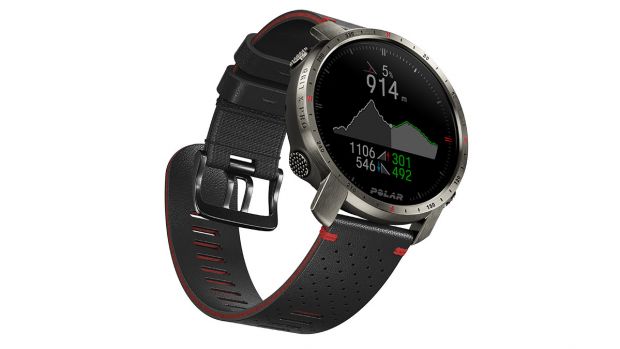
Outside Polar’s range, the Garmin Fenix 6 Pro remains the top dog in the world of sports watches, with fantastic tracking and training analysis, full maps, clever routing features and useful smarts like NFC payments and music storage. The Coros Vertix 2 also offers more features than the Grit X Pro, with music storage and full maps, though these features are basic compared with what you get on the Fenix. The Vertix 2’s other stand-out feature is its huge battery life: the watch generally lasts me a month on a single charge, rather than the four or five days I tend to get from the Polar.
At £600, both the Vertix 2 and the Fenix 6 Pro cost far more than the Grit X Pro, though you can generally find the Fenix for a lot less than that since it is an older watch. If you can get it for a similar price or even a little more than the Grit X Pro, the Fenix 6 Pro is what I’d spend my money on. The Grit X Pro does, however, offer more accurate sleep and recovery insights than any Garmin.
Design
The Polar Grit X Pro is heavier and hardier than the original Grit X. Like its predecessor it has a stainless steel case with a diamond-like carbon coating on the black version, but the screen is now made from Sapphire glass to be more robust than the Gorilla glass on the Grit X.
It’s a fairly chunky watch but doesn’t feel huge on the wrist, and overall I’d say the Grit X Pro is an attractive device, with the new compass etching on the outer bezel adding to its appeal.
However, the Grit X Pro still has the thick black bezel around the screen you find on most Polar watches. As well as making the watch look a little dated, it surrounds a display that I’d say is just OK. It’s not particularly bright when inside or outdoors, and sometimes I had to strain to see my stats during runs and cycles.
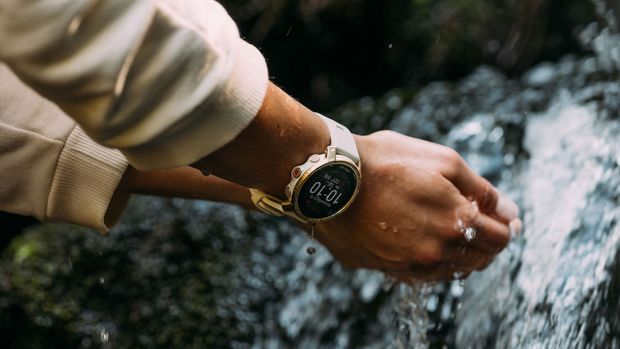
There’s a touchscreen for navigating around the watch, but I found it laggy and it was much easier to use the five buttons instead. It’s a feature Polar never seems to get right, and to be honest, I don’t know why it has them since the buttons are much better. Even with the buttons, there is some lag, with the watch often taking a beat to respond to my presses – often I would press buttons twice.
On the back of the watch is Polar’s Precision Prime optical heart rate sensor, and you can pair the Grit X Pro to external sensors including chest straps via Bluetooth, but ANT+ is not supported. There’s also a barometric altimeter and a compass, and it can use GPS, GLONASS, Galileo & QZSS satellite systems to pinpoint your location during outdoor activities. The watch is also waterproof to 100m.
Sports Tracking
The Polar Grit X Pro is a full triathlon watch with more customisable watch modes that you can shake a stick at. You can display four stats on each of your data screens within the different sports profiles, and set up structured workouts to follow from your wrist.
All the data from your activities is fed into Polar’s training load analysis, which will tell you if your workload is productive or if you’re overreaching. Other insights into your fitness and recovery come from the tests available, which include running and cycling fitness tests, and a leg recovery test where you jump on the spot three times to gauge your muscle fatigue.
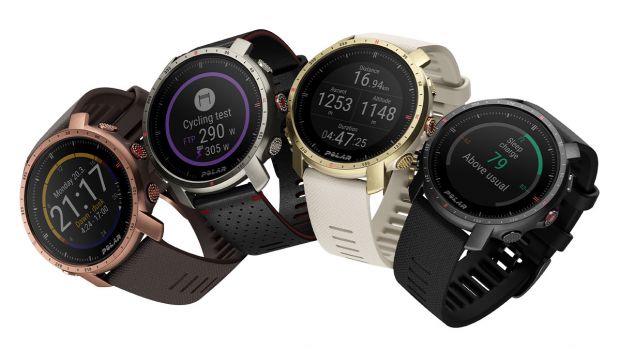
The accuracy of the Grit X Pro has broadly impressed me over several weeks of tracking my training and performing in line with most GPS watches I’ve tested. The GPS accuracy has been largely reliable on runs and cycles, and although my tracks have been wonky at times, the overall readings were never wildly wrong and can be used for pacing.
The heart rate accuracy was better than I’ve experienced with the Polar Precision Prime sensor in the past. With the original Grit X and Vantage V2 I found that it was wrong more often than not. That’s been reversed with the Grit X Pro, which generally provides a reading that is in line with that of a chest strap monitor. I’d still definitely pair a chest strap for more accurate results, especially if you’re going to use the training and recovery analysis on the watch to guide you. The optical tracking did throw up the odd completely incorrect reading during a run and that can skew your overall stats.
Like other Polar watches, it takes a while for the Grit X Pro to get to know you, and it’s worth mostly disregarding the Training Pro advice for a month or so. Once your baselines are set with the watch the training load advice can be genuinely useful, especially for overtraining.
I have a few minor gripes with Grit X Pro, all of which are consistent with problems I’ve seen in other Polar watches. Unlike Garmin and Coros watches it limits you to only four stats per data screen, which is annoying – although given the relatively dull display on the Grit X Pro that might be for the best. I also find that the structured workouts are trickier to use than on other watches, being harder to set up, and then harder to follow on the watch unless you are purely using heart rate to guide your sessions.
Overall, however, the sports tracking on the Grit X Pro is excellent and will satisfy the needs of the most obsessive athletes while still easy to use and helpful to beginners.
Navigation
Polar is yet to introduce full maps to any of its watches, but the Grit X Pro does offer breadcrumb trails with turn-by-turn directions. You can create routes on Komoot that are imported to your watch automatically or you can upload routes manually to the Polar Flow website. You get an elevation profile of your route plus a line and pointer on the watch, and you can open up a menu on the route page to bring up options like reverse route, which will direct you back to the start of your activity via the planned route.
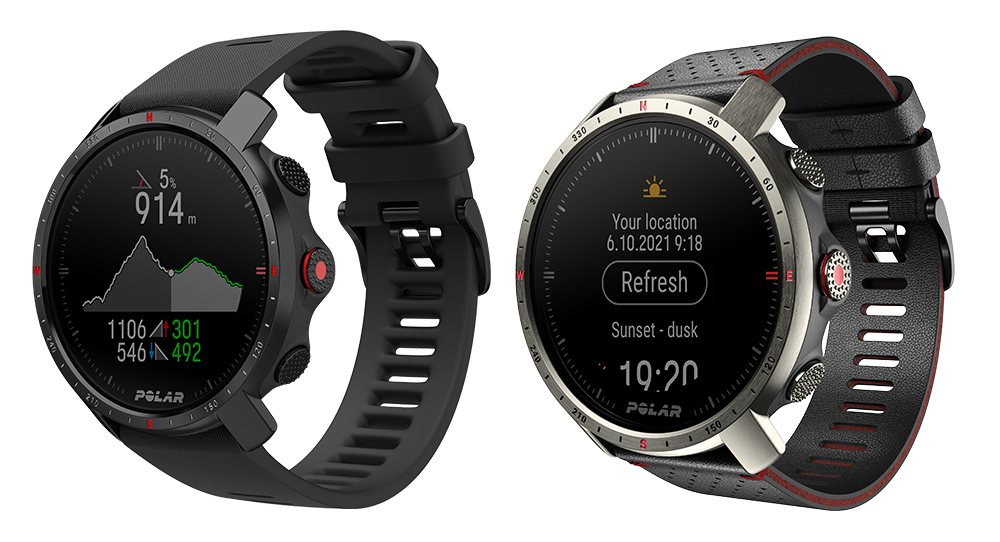
There’s the ability to see a beeline back to your starting point, as well as a “Track back” option, which will guide you home via the route you actually took, instead of the original planned route. The watch will also allow you to change to another route mid-activity.
On general runs without a route set up you also get the back-to-start directions, which I find particularly useful. I often can’t be bothered to set up a precise route when exploring a place but want safe directions home once I’m good and lost.
The routing features on the Grit X Pro aren’t as impressive as those on Garmin devices with maps. The Fenix 6 Pro series and Forerunner 945 both let you create routes on the fly and have easily followable context maps. However, they do the job of helping you to get from A to B in new places reliably. The addition of an elevation profile to the route information is also handy when running in particularly hilly places.
Sleep Tracking
Sleep tracking is an area where Polar has always outshone its main sports watch rivals, and that remains the case with the Grit X Pro, which offers the same detailed sleep analysis as all Polar’s devices.
After taking a few nights to set your baselines the Grit X Pro will track your sleep and give you an overall sleep score out of 100 each day, based on several factors like duration, continuity and time in REM or deep sleep. You are also given a Nightly Recharge rating based on this sleep score and information on how your autonomic nervous system (ANS) has recovered overnight. This data feeds into the Fitspark feature that recommends workouts for that day based on how well recovered you are.
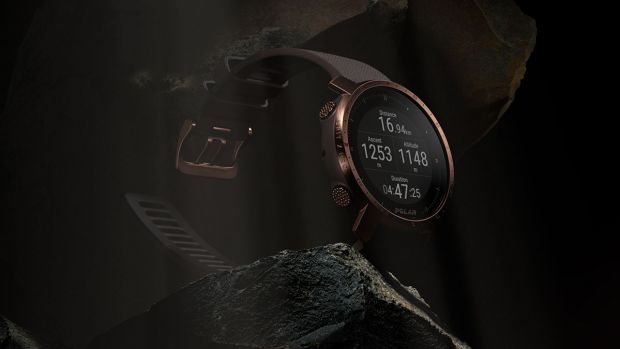
It’s a comprehensive approach to your sleep and recovery tracking and while there were some nights where the sleep tracking failed for me, when it does track it seems accurate. I also found it matched up well with the results I was getting from an Oura Ring and a Fitbit Charge 5, both of which I consider very good sleep trackers.
Battery Life
The Grit X Pro has 40 hours of GPS tracking and 100 hours in its power-saving mode, both of which are comparable to most sports watches aside from Garmin Enduro, which offers over 80 hours of GPS tracking, and the Vertix 2, which can give you up to 140 hours. However, like other Polar watches, the Grit X Pro drains far more quickly between activities than watches from rival brands, and I found it needed charging every five days or so when running every day.
This may be partly down to the power it draws at night for its impressive sleep tracking, but it’s still a weakness for Polar in general that you need to charge its watches weekly when both Garmin and Coros now offer devices that last more than a month.
Smart Features
Slowly but surely Polar is starting to add more smart features to its watches, but the Grit X Pro is still a bit short on this front. You can now control your music using the watch, but there is no storage available, which you do get with many Garmins and the Coros Vertix 2.
It does show the weather forecast, sunrise and sunset times, and you also get quick access to your altitude and the compass by scrolling through your “dashboard”, which is essentially the array of watch faces.
There are no NFC payments or even a basic app store like Garmin’s Connect IQ. Personally, I don’t really miss these features or even music storage, but many people will and it is one area where Polar continues to cede ground to other sports watches, let alone actual smart watches.

Nick Harris-Fry is a journalist who has been covering health and fitness since 2015. Nick is an avid runner, covering 70-110km a week, which gives him ample opportunity to test a wide range of running shoes and running gear. He is also the chief tester for fitness trackers and running watches, treadmills and exercise bikes, and workout headphones.
